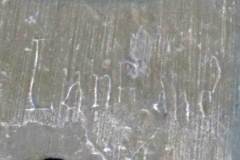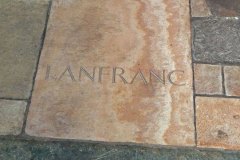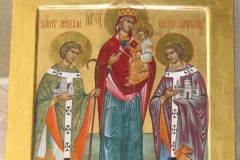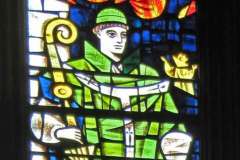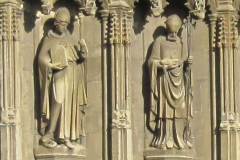(1005-1089) Archbishop, Teacher & Scholar
Lanfranc was born around 1005 in Pavia, son of a Lombard local magistrate. He became a teacher, travelled north over the alps into France, and by 1039 was master of the cathedral school at Avranches in Normandy. After three years here he joined the Abbey of Bec as a monk, where he worked for a further year in monastic seclusion. What followed was 30 years of increasing recognition and influence in monastic administration and state diplomacy. By 1066 he was first abbot of St Stephen’s at Caen, and with the removal of Stigand as Archbishop of Canterbury in 1070, Lanfranc, although in his mid-60s, was the preferred choice as successor. His signature (or bishop’s cross) appears on the 1073 Winchester Accord which confirmed the primacy of the see of Canterbury over all England. By the time of his sudden death following a short bout of fever in 1089 in Canterbury, he had contributed to English royal and state and religious affairs at the highest level for approaching 20 years. He was buried in the nave of the cathedral but his remains were removed to the newly built north west transept following the fire of 1174. He and his successor, Anselm, one essentially an administrator and the other a spiritual leader, represent the two greatest archbishops of medieval times.
What to see:
- the name ‘Lanfrancus’ scratched into the east wall of St Martin’s chapel in the north east transept (Image 1)
- the modern stone in St Martin’s chapel bearing Lanfranc’s name (Image 2)
- the modern icon in St Anselm’s chapel which includes an image of Lanfranc – the icon was a gift from the Abbey of Bec given in 1999 to mark the 50th anniversary of the re-founding of the abbey (Image 3)
- the image of Lanfranc which forms part of the H J Stammer window in St Anselm’s chapel (Image 4)
- statue of Lanfranc on the south face of the south west porch – this is one of over 60 statues by Theodore Phyffers (Image 5)
Sources: see standard cathedral sources; also Knowles (1962)
DL

